
Every year on March 3rd, there is a Japanese holiday called "Hinamatsuri" that celebrates and prays for the healthy growth of girls. Let's look into the origin of this holiday and why it's only for girls.
What is Hinamatsuri?
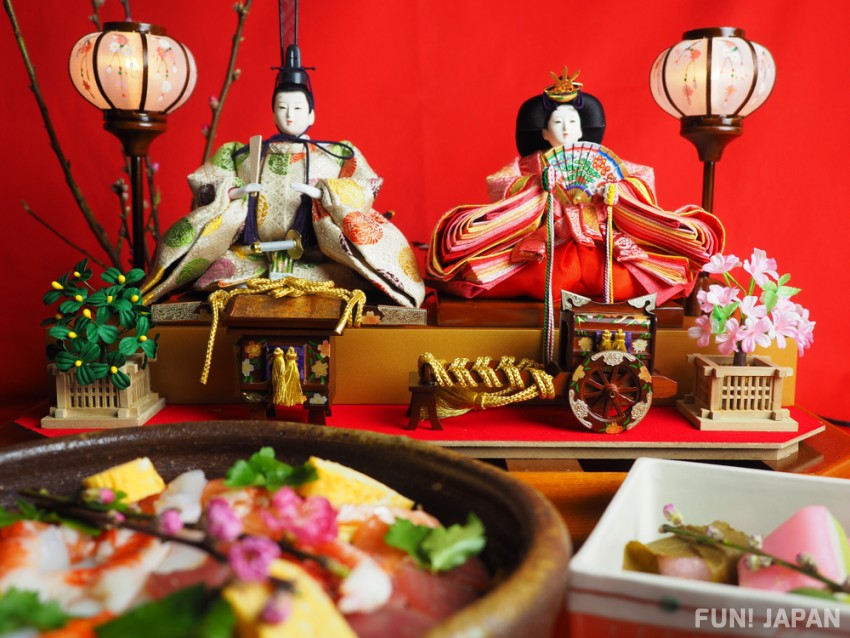
During this event, people pray for the health and growth of girls. It is also sometimes known as the "Peach Festival", and people will hang up Hina dolls if there is a girl in their family, they may also decorate using grilled bits of rice cake and eat chirashi sushi (sushi rice in a box or bowl with a variety of ingredients sprinkled on top) or clams during this day.
Hinamatsuri's History & Origin
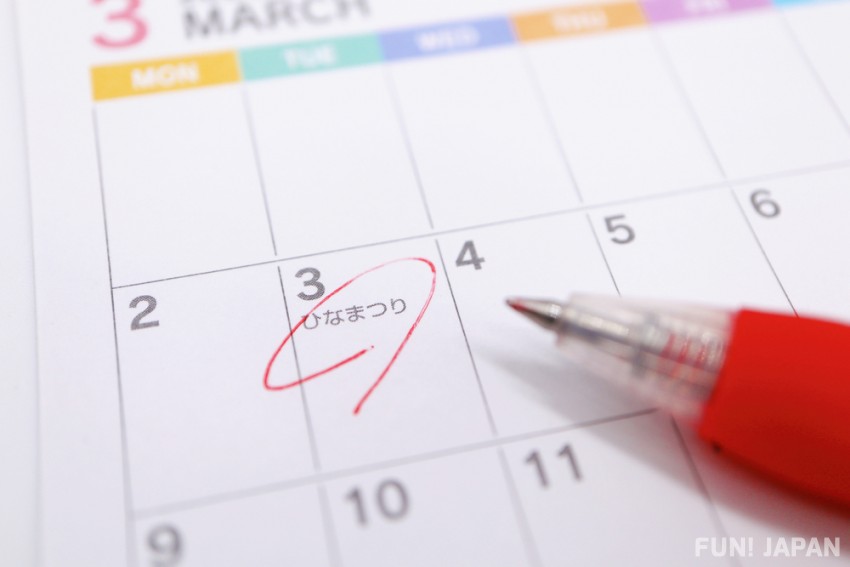
While there are various opinions as to where the Hinamatsuri originated from, the most prominent one is that it came from China's "Doll's Festival" which takes place on the same day. It used to be a day where you would drive away evilness and ill intent, you would transfer your bad feelings into the doll and then float them down the river on the day of the holiday. As the times changed, so did the level at which these dolls could be crafted, and so, they changed from something you would let float down a river into something you would decorate in your own home.
It is said that the day itself was designated for girl's health and growth from as early as the Edo period of Japan.
Reasons for Decorating using Hina Dolls & Peach Flowers
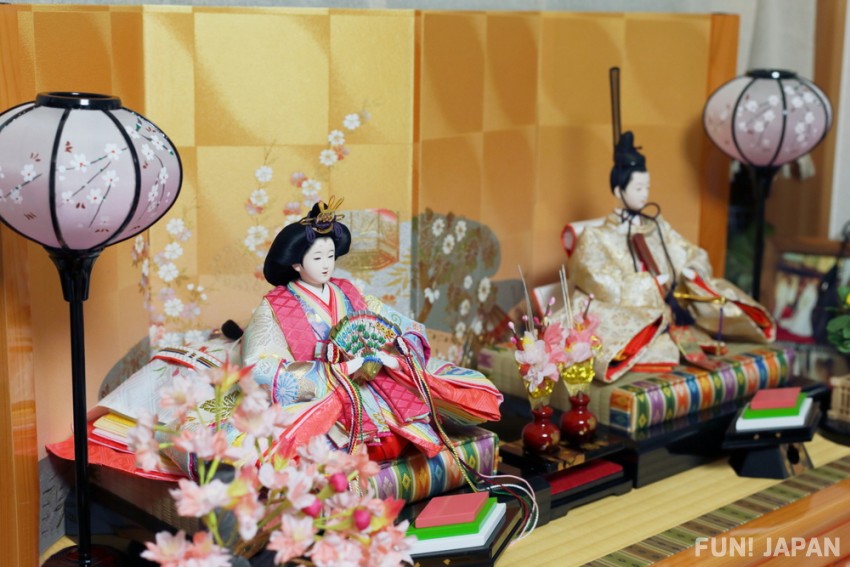
These Hina dolls are said to take illness from the children as well as protect them from any accidents. It's because of this that many households display them proudly to ensure their child will be happy and healthy.
The reason for displaying the peach flowers comes from the Chinese tradition where these flowers are also used. In China, it is said that the power of long life and the ability to ward off evil spirits is contained within these flowers. Also, there are opinions that it could also be because these flowers bloom at around the same time as Hanamatsuri.
How do you Spend your Day during Hinamatsuri?
Decorating Hina Dolls
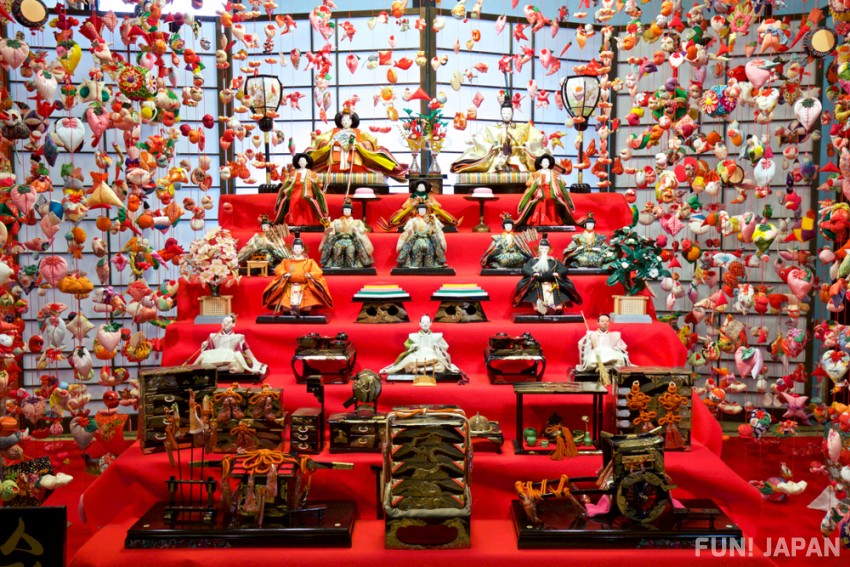
Hina dolls are displayed from the first day of Spring (Feb 4) all the way until the middle of February, once Hinamatsuri has ended they are quickly tidied up and put away. There are 2 main doll types, the "Standing" and "Sitting" Hina. There are a few other types of displays that are used depending on the region of Japan such as the "Seven-step Decoration" and "Three-step Decoration".
Eating Grilled Bits of Rice Cake
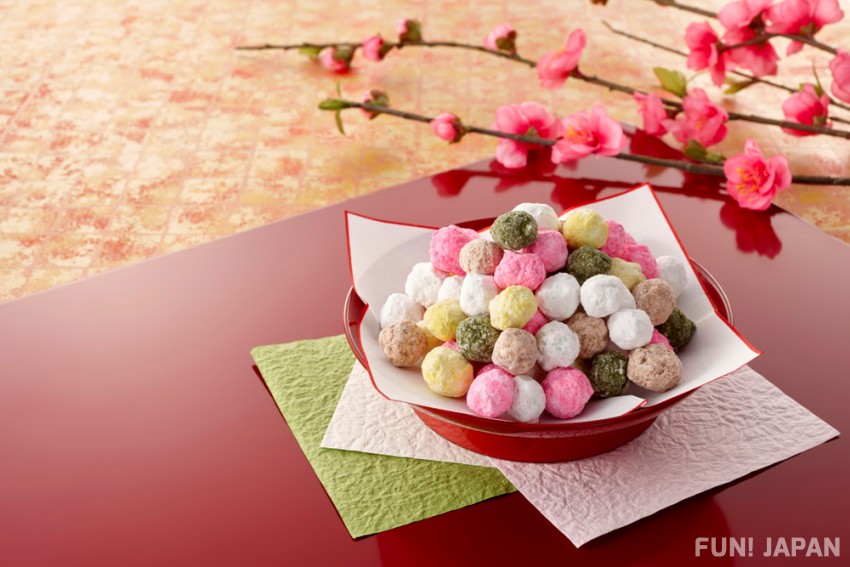
This is Hinamatsuri's most well-known snack. There are typically a total of 3 or 4 colors. When there are 3 colors, they will be pink, green, and white. The pink represents blood and life. The green represents nature and vitality. The white represents snow across a large amount of ground which brings great energy. The whole bowl is given so that the "Girls may accept nature's energy and life long and healthy".
If there are 4 colors, the 4th will typically be yellow which represents the 4 seasons. Pink represents spring, green represents summer, yellow represents autumn, and white winter. This has the meaning of "Allowing the girls to live healthily all-year-round".
Eating Chirashi Sushi and Clams
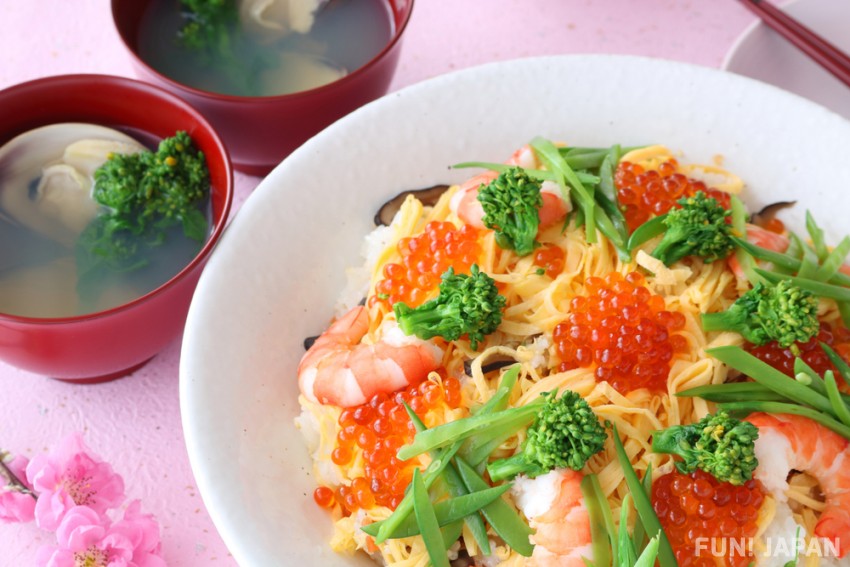
There are many different ingredients found within chirashi sushi, this is said to be eaten to ensure the child will grow up without being troubled by what they can and cannot eat. Also, as a clam spends most of its life with its shell, it is said that the wish for eating these clams is to allow the child to find a partner.
How did you find this article? Is there a similar custom in your own country? We would love to know about it!
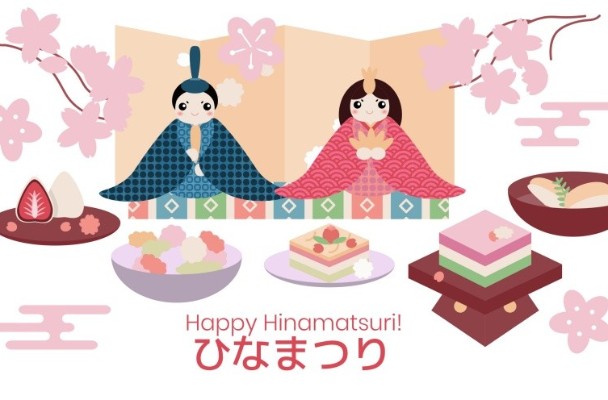
Comments